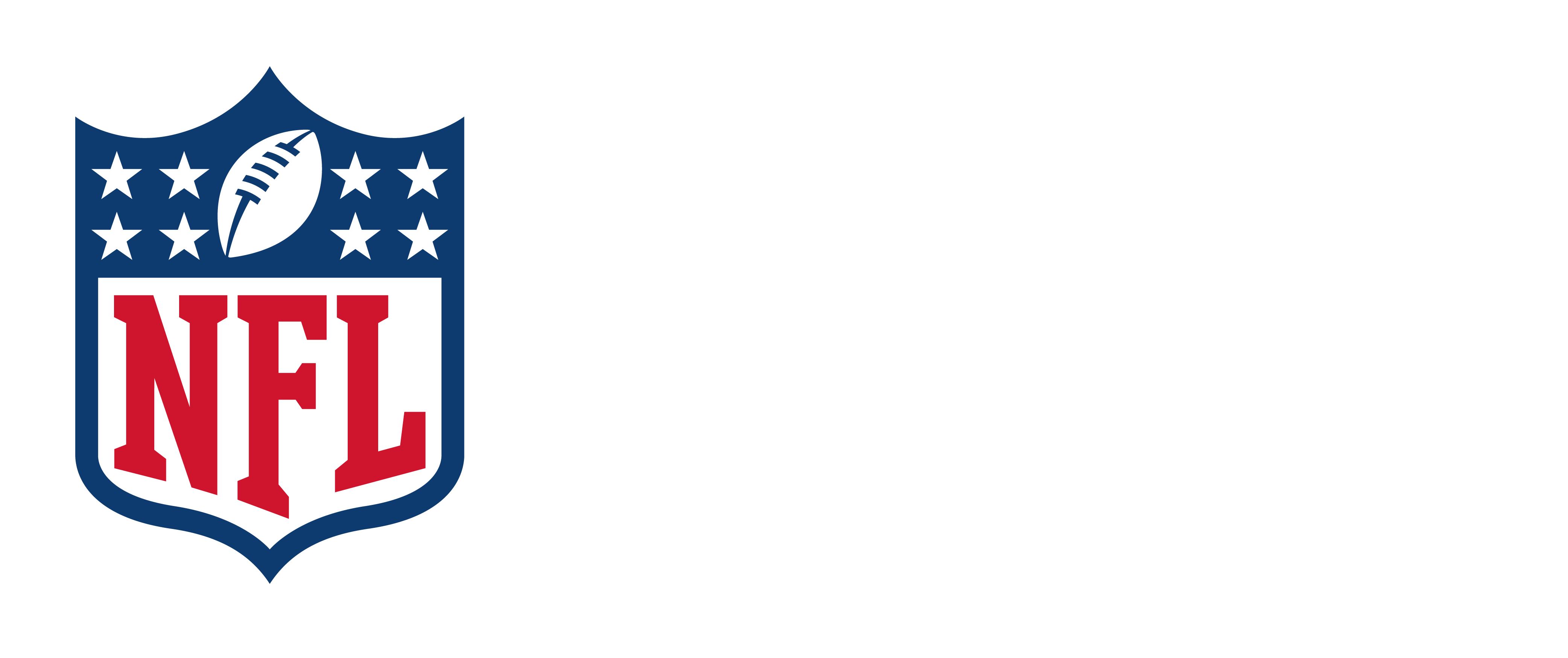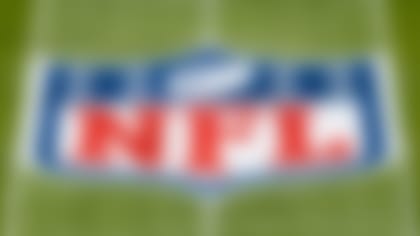On September 3, 2025, NFL Chief Medical Officer Dr. Allen Sills led a discussion with a group of experts from youth, high school and college football programs, for a conversation about how their programs approach player health and safety, including adapting and applying NFL player health and safety best practices within their programs.
A recording of the event is available to view below:
Dr. Sills was joined by:
- Dr. Jay Clugston, Clinical Professor in the Department of Community Health and Family Medicine and Team Physician for University of Florida Athletic Association
- Dr. Alex Diamond, Vanderbilt University; Director, Vanderbilt Youth Sports Health Center and Chair of the National Federation of State High School Associations (NFHS) Sports Medicine Advisory Committee
- Collin Francis, Associate Athletic Director for Student Athlete Health, Wellness and Performance, Howard University
- Chad Pennington, NFL Legend and Head Football Coach, Sayre School
Additional community resources mentioned during the session include:
Key takeaways from the conversation:
On how programs leverage the NFL's helmet testing:
Dr. Jay Clugston: "I think the biggest thing we've picked up [from the NFL] is looking at the helmet rating system. Now we even have players that pay attention to it, so it's made it easier to talk to players about what helmets might be right for them. You always have to balance supplies, costs and things like that, but I think that's been really helpful, and even parents have reached out about it."
Collin Francis: "As soon as the NFL comes out with the data and allows us to see it, we access it and it really helps us shape the recommendations that we give to our players. From the education standpoint of educating the players on what their helmet actually does and the parts that have to fit correctly, it's really changed what we do."
On rules changes and leveraging data for player safety:
Dr. Jay Clugston: "Drawing attention to [plays like the kickoff] is helpful to us and our coaches and our athletes. It did allow us to talk to people on, why do you think [the NFL] made the change? After we got to hear from you and other folks, we realized how much data you had and how you looked at injury rates on the play, closing speeds, where you started, and you could model things. It was really amazing to us to realize how much information and thought went into it. It made us think, are there things that we could do that we have data on? That was a big impact to us to see the power of using data to try and make the game safer. We've started to look at other ways we could do that."
On how the NFL has learned and adapted best practices from other levels of the game:
Dr. Allen Sills: "I like to go back and talk about our medical time out, which happens one hour before kickoff, our 60 Minute Meeting, when we bring together all of the medical personnel from both teams, all the emergency personnel. The referee comes in, and that group meets one hour before kickoff to go over one more time that emergency action plan. What I love to share with people is that idea came from a physician by the name of Jim Kyle, who covered high school football games, looking at how he could better organize Friday night games where they didn't have physician coverage, where they didn't have all of these various providers around. He came up with this idea of this pregame medical briefing among the two teams and their representatives. That, to me, is a great example where it wasn't the NFL bringing something to other levels. It was another level, bringing something to the NFL that we sort of took and adapted."
On emergency preparedness:
Dr. Alex Diamond: "The emergency action plan is one of the most impactful things that has been created and has shaped not only football, but the other 8 million student athletes who are playing high school sports, and certainly all those 40, 50, 60 million youth athletes where you don't have all those resources. Having an EAP that's written and rehearsed and the medical time out and everyone's on the same page, and I think it's just such a valuable resource. If you're going to do nothing else, this is the thing to do. It also encourages you to go out and get educated and learn how to do CPR and maybe get an AED so you actually know how to respond to those things. My biggest challenge to folks is do that pre-event medical meeting."
Collin Francis: "It's super important that each EAP is repeatable and venue and sport specific. So for each sport that you have and for each venue that you use, you need to have a separate emergency action plan. That emergency action plan needs to be disseminated amongst coaches, staff and anyone who's going to use the facility, and then practiced again and again and again, so that in an emergency, you'll be ready to act."
On health and safety at the youngest levels of the game:
Dr. Alex Diamond: "We really focus on those big things, like concussion, heat, heart…and then you have to do is you have to be willing to meet people where they are. I have yet to meet a coach or administrator at a youth level or high school level or any level that doesn't want to do the right thing. They all have different resources, but they're in it for the right reasons, and so it's our responsibility to give them that education and the resources and the preparation on how to do it."
On reducing head impacts at every level:
Dr. Allen Sills: "Football is a collision and a contact sport, right? We know that's going to occur, and you've got to teach the fundamentals of the game. We often talk about in the NFL that we only have 14 contact practices for an entire season, but I've also heard from young coaches that work with younger athletes is, well, they got to learn those fundamentals by the time they get to the NFL. You know, they're really, really skilled, but somewhere along, they have to learn the fundamentals and emotions that go into doing things safely."
Chad Pennington: "Today's athlete has information at his or her fingertips, and so they are educated on the techniques and the different things. I'll have players that even question me on a drill. They'll google it and make sure that I'm doing what I'm supposed to be doing as a coach, which is great. I love that conversation. I always go back to three things [from your research, Dr. Sills,] that really are mainstays within our program. Number one, having the right equipment. Number two, teaching the techniques. And number three, making sure our practice schedules are correct and are making sure that they're we're protecting our players from unnecessary risk, and that practice schedule is so important. It's our job as a coaching staff to give every player the tools in his or her toolbox to make sure that they can make the appropriate block, make the appropriate tackle and protect themselves from unnecessary risk."
Dr. Jay Clugston: "I have seen a change...I think it could change more. We see people paying more attention to how long they're spending in some of the high contact drills and then some of the really dangerous drills you're not seeing anymore…and so if you could, if you could convince a coach and show them that this, this may impact a player's availability over time, that if you could do less, even you a minute less of that drill, you could significantly reduce the numbers of impacts that that lineman might sustain over the four year career."
On the importance of mental health:
Dr. Jay Clugston: "I think all of us are responsible, the whole staff, including our coaches…everybody needs to be on alert for those issues. We are trying to get more and more resources aligned for mental health and educating players that, hey, you know, we're here for you. It's not uncommon to have some problems or issues or feel down a little bit, or lonely or anxious, and those aren't a sign of any kind of weakness, or, you know, this is pretty common. You're away at school and you're doing strenuous activity, you got classwork. So we just try to bring it up. I know our athletic training staff, and we have a whole mental health staff now, does a does a good job of reminding athletes that they're there and come talk to us and let us know. So just having it top of mind that that's an issue, it affects all of our athletes, has been helpful."
Chad Pennington: "It's a big responsibility for me as a coach, because I'm working with the most important person in that family's life, and that's their son or daughter. And so that's a huge blessing and a huge responsibility too. And so that open communication line that we try to establish with our players...we want to be able to talk about things. And then we also want our families to know they can call me and talk about it because, quite frankly, sometimes I'm spending more time with their son or daughter than they actually are at home. And so having those open communication lines that we can talk about those things. It's not a sign of weakness or that you're not strong enough or whatever. It's just life, and we're doing life together. We want to make sure that the game of football is a platform to help them succeed in the next chapter of their life. It's not the only thing that's going on."
On one thing every program can do to advance player health and safety:
Chad Pennington: "In the high school coaching world, it is certainly practice schedule…making sure that practices are scheduled correctly, scheduled with the purpose, that they have intent, and they're not only collectively designed, they're individually designed as well. If you can really come up with effective practice schedules and templates that you can use, I think your athletes are going to perform at a higher level, and you're going to take care of them and protect them from unnecessary risks."
Collin Francis: "When you think of major injuries, a lot of them can be prevented or prepared with proper preparation. So knowledge of where the AED is, making sure everyone has CPR AED certifications, and making sure those emergency action plans are practiced, posted and present."
Dr. Alex Diamond: "The pre-event medical meeting is just absolutely critical, and takes what the others have said and wraps it into your handbook on the sideline."
Dr. Jay Clugston: "Consider the athlete and their person and what they're going to do in the future. You want to think about their long-term health. They may not listen to you but you want to make sure you feel like you've done your best to give them the information they need for long-term success and health."











